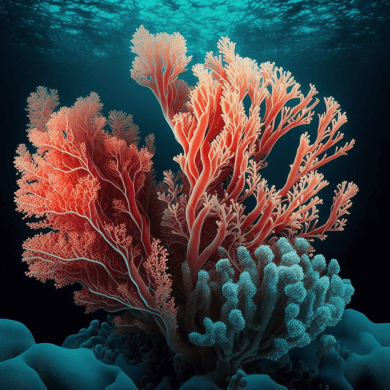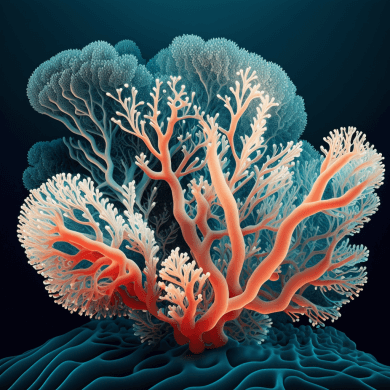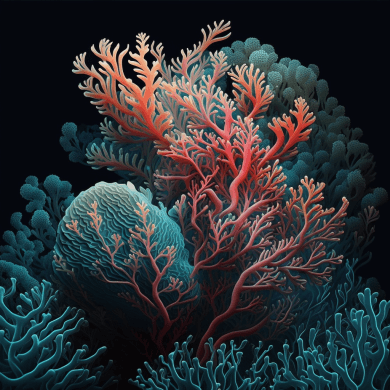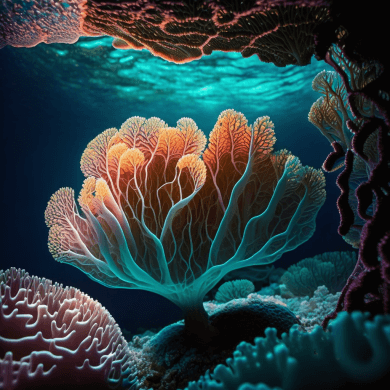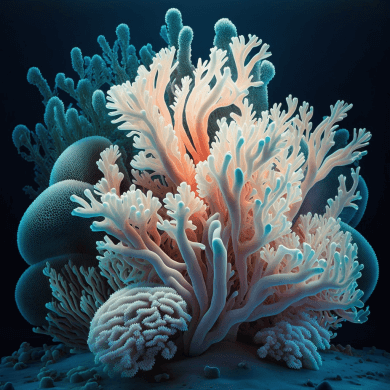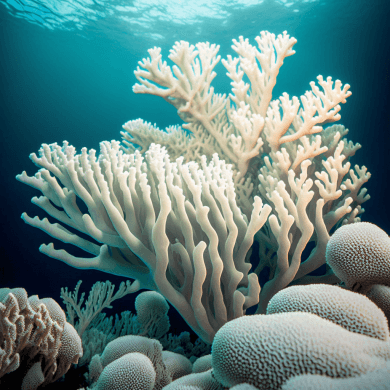The most important ecology on earth-Coral Reef
Coral reefs are one of the most diverse and important ecosystems on Earth. They are home to a wide variety of species, including fish, invertebrates and corals, and are found in tropical oceans around the world.
Unfortunately, coral reefs are in crisis. Global coral cover has halved since the 1950s, according to an analysis by The Guardian. A study published in the journal Nature found that coral bleaching has become more common over the past two decades, while a PLOS ONE article found that reef diversity increases with distance from the Indo-Australian archipelago And reduce.
The findings are worrying because coral reefs are critical to the health of Earth’s oceans. They provide habitat for a wide variety of species and help protect coastlines from storms and erosion. Additionally, coral reefs are a major source of food and income for many coastal communities around the world.
Coral Bleaching
What is Coral Bleaching?
Coral bleaching is a phenomenon that occurs when corals lose their symbiotic algae, zooxanthellae, or algae whose photosynthetic pigments degrade.
This bleaching of corals has been linked to the destruction of coral reefs, which are home to approximately 25 percent of all marine species. Coral bleaching has multiple causes, including ocean temperature changes and warming ocean temperatures due to climate change.

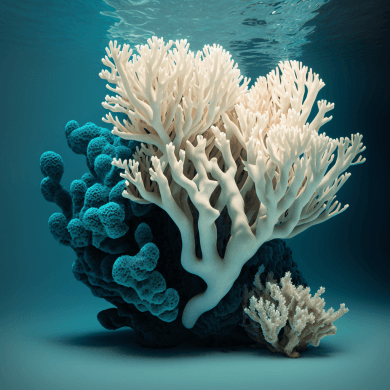
Coral Bleaching Event
The most recent global coral bleaching event occurred in 2020, with the worst bleaching occurring in the Caribbean, Indian Ocean and South Pacific. The event is the fourth global coral bleaching event since 1998, the first in 1998, the second in 2010 and the third in 2015.
Effects of Coral Bleaching
The effects of coral bleaching can be devastating to coral reefs. Without algae, corals lose their main food source, turn white or very pale, and are more susceptible to disease. This can lead to a reduction in biodiversity, as coral reefs are home to a variety of marine species. In addition, coral bleaching can lead to fewer fish living in coral reefs, as fish depend on coral reefs for food and shelter.
Protect the Coral Reefs
Coral bleaching is a serious problem that needs to be addressed. To help protect coral reefs, it is important to reduce pollution and runoff entering the ocean, which increases ocean temperatures and contributes to coral bleaching. Also, reducing carbon emissions is important as this helps to reduce the impact of climate change, which is one of the main causes of coral bleaching.
In summary, coral bleaching is a phenomenon that occurs when corals lose their symbiotic algae zooxanthellae or degrade photosynthetic pigments of algae. This bleaching of corals has been linked to the destruction of coral reefs, which are home to approximately 25 percent of all marine species. Coral bleaching occurs for a variety of reasons, including changes in ocean temperature and warming ocean temperatures due to climate change. The effects of coral bleaching can be devastating to coral reefs, leading to a reduction in biodiversity and the number of fish that inhabit the reefs. To help protect coral reefs, it is important to reduce pollution and runoff into the ocean, as well as reduce carbon emissions.
Severe situation for Taiwan’s Coral Reefs
Coral Bleaching Observation Network
Half of Taiwan’s coral reefs have already bleached and a third are dying, according to a report by the Taiwan Coral Bleaching Observation Network (TCBON) on January 13, 2021.
This is the highest degree of albinism in Taiwan’s history. Bleaching occurs when water temperatures rise above normal ranges, causing corals to expel algae that live in their tissues. This process leaves corals vulnerable to disease and death. A lack of storms in southern Taiwan has been identified as the main factor contributing to the bleaching. The consequences of this bleaching are dire. It not only threatens fragile underwater ecosystems, but also affects the livelihoods of people in coastal areas. Additionally, it has a negative impact on tourism, as coral reefs are a major attraction for tourists.
Conservation action
To protect Taiwan’s coral reefs, action must be taken. Governments should implement policies to reduce the amount of pollution entering the ocean and limit fishing and other activities that can damage corals. In addition, the public should be educated about the importance of coral reefs and the dangers of coral bleaching.
Clearly, Taiwan’s coral reefs are in a state of flux. To protect them, immediate action must be taken. By implementing policies to reduce pollution and educating the public, we can ensure that Taiwan’s coral reefs are preserved for future generations.
Source
1.https://www.globalcitizen.org/en/content/half-of-taiwans-reefs-have-been-bleached/
2.https://www.taipeitimes.com/News/front/archives/2021/01/13/2003750473
3.https://newsinfo.inquirer.net/1383321/corals-are-being-cooked-a-third-of-taiwans-reefs-are-dying
4.https://www.taipeitimes.com/News/taiwan/archives/2022/08/19/2003783788
5.https://newsinfo.inquirer.net/1383321/corals-are-being-cooked-a-third-of-taiwans-reefs-are-dying
6.https://www.globalcitizen.org/en/content/half-of-taiwans-reefs-have-been-bleached/
7.https://coralreefwatch.noaa.gov/product/vs/gauges/southern_taiwan.php
